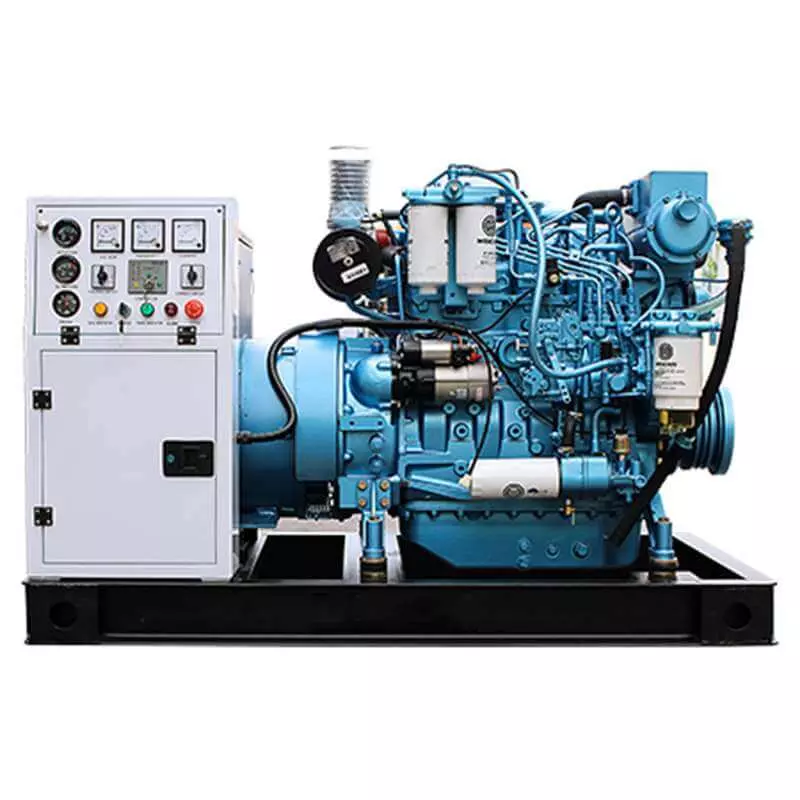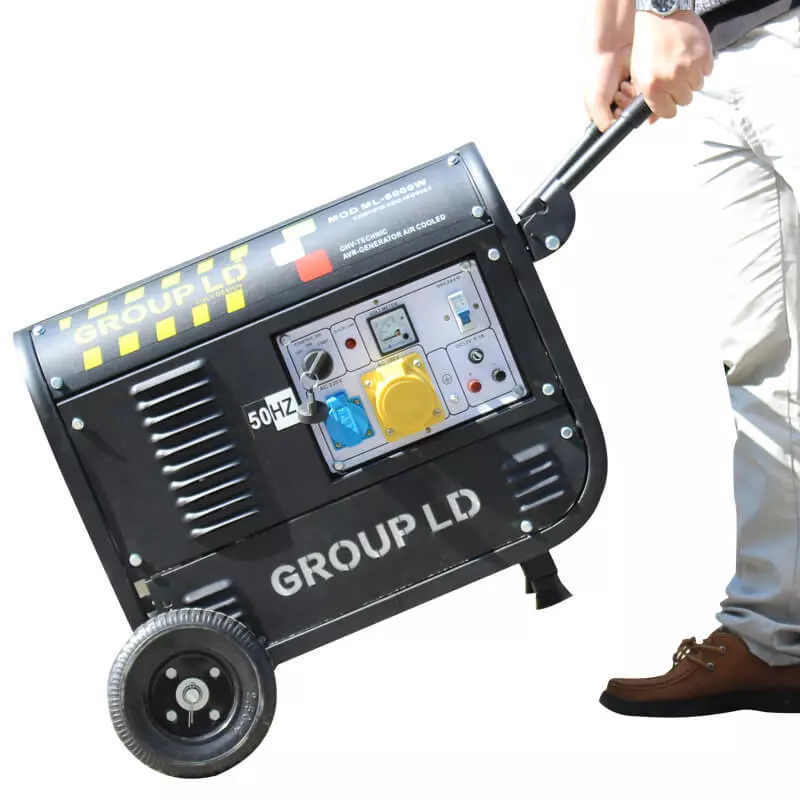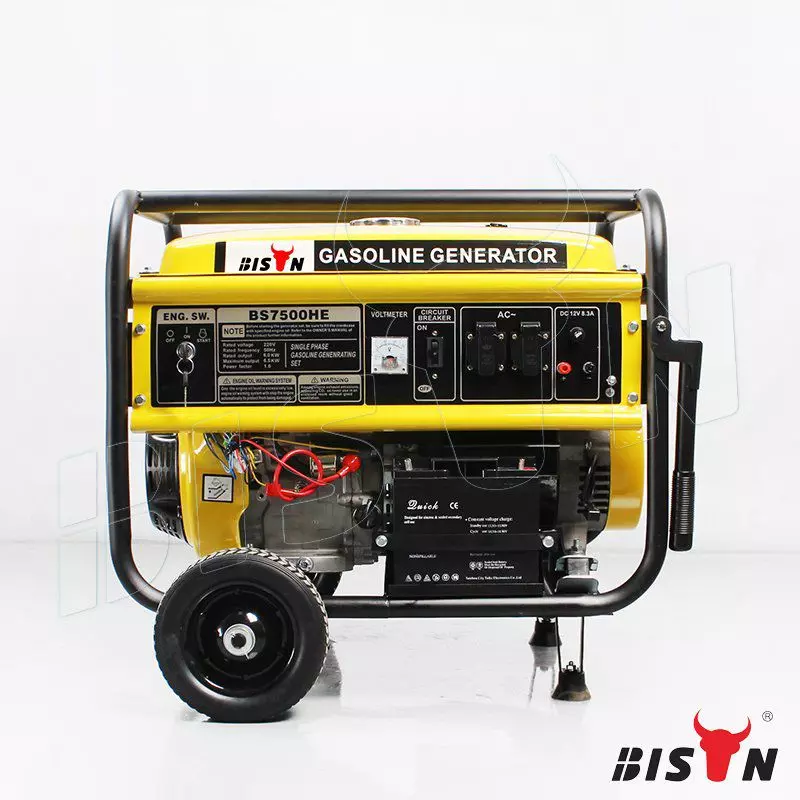How to change generator spark plug
2023-09-12
Table of content
Is this the time of year when you need to replace your worn-out spark plugs and tune up your generator? Although it looks complicated, the actual replacement procedure is very simple. For a skilled handyman, this will be a breeze.
With this step-by-step guide to changing generator spark plugs from BISON, no one will have any problems.
First, let’s briefly introduce what is a spark plug. A spark plug is a crucial component of your generator, functioning as the ignition's linchpin. Its primary role is to ignite the fuel-air mixture in the combustion chamber, thus starting the generator. The spark plug delivers an electric current from the generator’s ignition system to the combustion chamber, creating a spark that ignites the mixture and starts the power generation process.
Knowing when to change generator spark plug is vital for maintaining the generator's efficiency and longevity. Here are some common signs that indicate it might be time for a change:
Difficulty in starting the generator: If your generator takes multiple tries to start or doesn't start at all, this could be a sign that your spark plug needs replacement.
Reduced fuel efficiency: A worn-out spark plug can lead to incomplete combustion, resulting in reduced fuel efficiency.
Engine misfire: This can be caused by a faulty spark plug failing to ignite the fuel-air mixture properly.
Rough engine idling: If your generator engine idles roughly or runs unevenly, it could be due to a worn or damaged spark plug.
Tools Needed for Spark Plug Replacement
When it comes to changing a spark plug in a generator, having the right tools at your disposal can make the process smoother and more efficient. Here are the necessary tools you'll need, along with their specific functions:
Spark plug wrench: This is a specialized tool designed specifically for removing and installing spark plugs. It has a deep socket that fits over the spark plug and allows you to unscrew it from the engine. Some wrenches come with a rubber insert that grips the plug, making it easier to remove and install without damaging it.
Feeler gauge: A feeler gauge is used to measure the gap between the center and ground electrode of the spark plug. This gap is critical to the proper operation of the spark plug; if it's too wide or too narrow, the spark may not ignite efficiently.
New spark plug: This is the replacement for the old, worn-out spark plug. Always make sure to get a spark plug that matches the specifications of your generator's engine.
Rag: This is used to clean the area around the spark plug before removal. Cleaning helps prevent any debris from falling into the combustion chamber when the spark plug is removed.
By having these tools on hand and understanding their use, you can efficiently and safely replace your generator's spark plug, ensuring its optimal performance and longevity.

Step-by-Step guide to changing generator spark plug
Obviously, during the replacement process, if the instructions are not followed correctly, a lot of damage to the engine can be done. This is why you should realistically assess your skills. If you feel like you can’t do all the steps, it’s wise to spend the extra money to have the old spark plugs replaced by a professional. If you decide to go ahead and do it yourself, keep reading.
Before we dive into the steps, it's important to note that safety should always be your top priority when dealing with electrical equipment like generators. Before you start changing plugs, you need to ensure the generator’s power switch is in the off position and all power cords are unplugged. Also, if you have run the machine before you decide to replace the spark plug, ensure its surface isn’t too hot, as you can easily burn your skin. Make sure you're wearing protective gear like gloves and eye protection to safeguard yourself from any accidental sparks or debris. Once this is done, you can move on to these steps.
Removing the old spark plug
#Step 1: Find spark plug
Finding the spark plug’s location is the first and frequently most difficult step, especially if you’re doing this for the first time. Usually, it’s hidden under a removable housing and covered by a spark plug cover. The easiest way to find the spark plug is to find and follow a black cable that goes to the engine with a boot on the end. Check the owner’s manual if you are having trouble positioning the spark plug. It might provide clues as to where it might be hiding and how to approach it most effectively. Additionally, some brands and more potent models might have multiple spark plugs.
#Step 2: Disconnect the plug cord
Fit your spark plug wrench over the spark plug, ensuring it's firmly in place. Then, turn the wrench counterclockwise to loosen the spark plug. Once it's loose, you should be able to unscrew it by hand. This way, you can easily disconnect the wires even if they are slightly corroded. The rotational motion helps loosen the connection from the spark plug, reducing strain on the wire. Never pull on the wire section, as this can easily damage it.

#Step 3: Clean Everything Around
After unplugging the cord, you need to ensure that the old spark plug and everything around it is clean. Anything that enters it will eventually cause damage. So be sure to remove and clean any dirt, debris, and oil residue that may have fallen in.
#Step 4: Unplug old spark plug
If everything is clean and you’re sure nothing could fall into your engine, you can go ahead and remove the old spark plug.
Just use the wrench to loosen the spark plug and then remove it. When disassembling, do not change the angle of the socket; otherwise, the plug will be damaged.

#Step 5: Inspect the spark plug for wear and damage
Once you've removed the spark plug, inspect it closely. Look for signs of wear such as a worn or eroded electrode (the small metal piece that sparks), deposits on the insulator (the ceramic part of the plug), or any cracks or damage. Even if the damage seems minor, a worn or damaged spark plug can significantly impact your generator's performance. Always replace with a new spark plug that matches your generator's specifications.
Things to note before installing a new spark plug.
# Step 6: Use the feeler gauge to measure the spark plug gap
Before putting new spark plugs in the generator, make sure you have the correct model, size, and clearance. The spark plug gap is the distance between the center and side electrodes at the tip of the spark plug. To measure this gap, you'll use a tool called a feeler gauge. If the gap is too wide or too narrow, it can affect your generator's performance.
You can do this by putting a feeler gauge into the gap until you can still move it freely but start to feel a small amount of resistance. It should not be too loose nor too tight.
If the spark plug gap doesn't match your generator's specifications, you'll need to adjust it. To widen the gap, gently pry the side electrode away from the center electrode using the feeler gauge. To narrow the gap, carefully press the side electrode closer to the center electrode.
Once you've made your adjustments, use the feeler gauge to check the gap again. Repeat this process until the gap matches the specifications in your generator's manual.

Installing the new spark plug
Once you have the correct clearance on your plug, you can install it.
#Step 7: Screw the new spark plug into the engine by hand until It is snug
Just grab the empty spark plug , insert the new plug into it, and put it into the empty socket in the engine.
You can wiggle it a little until it sits properly in the hole, then gently rotate it with your hands. It should go smoothly without any resistance.
At this point, it’s easy to get through the spark plug, so use it gently, and if it resists, remove it and try reinstalling again.
#Step 8: Use the spark plug wrench to tighten the spark plug to the specified torque
Once the spark plug is hand-tight, use your spark plug wrench to tighten it further. Be careful not to over-tighten, as this can damage the spark plug or the engine. Your generator's manual should specify the correct torque for the spark plug. Usually, 1/4 turn is enough, but this number may vary, so it’s better to see your instruction manual.

#Step 9: Reconnect the spark plug wire to the spark plug
Once the new spark plug is securely in place, you will need to reconnect the wires. Take the spark plug wire that you disconnected earlier and push it onto the end of the spark plug. Then, press it until it’s fully in.
You should feel or hear a click when it's securely in place. Make sure the connection is firm; a loose connection can cause the generator to run poorly or not at all.
Testing the Generator
Start by checking your generator for leaks. Once it's safe, turn on the generator and listen for any unusual sounds. Test its power output by plugging in a device. Allow the generator to run for a bit while monitoring its performance. This process ensures the new spark plug works and the generator functions as expected.
Common mistakes to avoid when changing a spark plug
Here are some common mistakes people often make when changing a spark plug, and tips on how to avoid them:
Installing in a contaminated area: Dirt and dust can accumulate on the engine during operation. If you install a spark plug in a contaminated area, it can cause issues. Always clean around the spark plug area before installation to avoid this mistake.
Improper torque: Applying too much or too little torque when installing the spark plug can lead to problems. Too much torque can damage the threads, while too little can cause the spark plug to loosen over time. Always use a torque wrench and follow the manufacturer's specifications to ensure the correct amount of torque.
Using the wrong spark plug: Not all spark plugs are the same. Using the wrong type for your engine can lead to poor performance and potential damage. Always check your vehicle's manual to determine the correct type of spark plug for your engine.
Not properly connecting the spark plug wire: If the spark plug wire isn't securely connected to the spark plug, it can cause the engine to run poorly. Make sure the connection is firm after installing the new spark plug.
The importance of regular maintenance of spark plugs
Regular maintenance of any machinery, including changing the spark plug in an engine, is crucial for several reasons:
Continue to produce optimal combustion
Fully functional spark plugs help support a fully functional combustion system. Run this successfully, and many of your performance issues may become a distant memory.
better fuel economy
Spark plug misfires can reduce fuel efficiency by 30 percent. Replacing new plugs at specified intervals can help maximize fuel economy and save you money.
smooth and dynamic start
Turning the ignition with a new spark plug for the first time can be an eye-opener. The old can be the reason your generator is experiencing those jerky starts.
reduce harmful emissions
Diligent generator maintenance—especially spark plugs—can help improve fuel efficiency and reduce air pollution.
In conclusion
Now that you have the knowledge on how to change the generator spark plug, you can do it whenever you need to. With a few simple tools and a bit of your time, you can ensure your generator continues to run at its best, delivering reliable power when you need it most. Following the steps outlined in this guide will help you avoid common mistakes and ensure a successful spark plug change.
If you encounter any difficulties while changing your BISON generator's spark plug, or if you simply prefer professional help for routine maintenance, you can rely on BISON to guide you.
Moreover, we invite you to explore our other articles and guides on BISON generator maintenance. We provide a wealth of information to help you understand your generator better and keep it running efficiently. From troubleshooting tips to comprehensive maintenance guides, we're here to empower you with knowledge.
Remember, regular maintenance is key to the longevity and efficiency of your machinery. So, don't hesitate - get started on your spark plug change today! Your generator (and your future self) will thank you.




